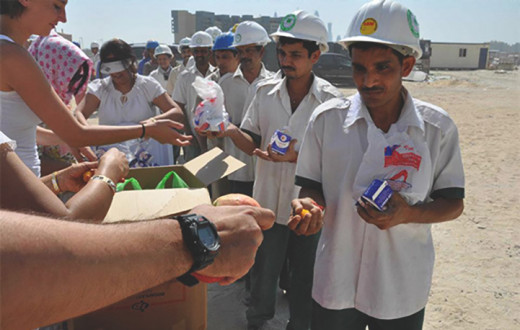An Endeavour to spread Self-Sufficient, Holistic Education
Chandan Soren comes home each evening to his mother and three sisters, pleased after attending school, alongside earning a salary by driving his teacher’s home. He is one amongst many who found an ocean of hope after the Art of Living started 425 schools all over the country, making education a reality for 51,000 students.
The Project
In Jharkhand, 2,734 students from 60 tribal villages are reaping the benefits of this project since 1999. Brij Bhushan Chawla ji, a volunteer and leader of this project inspired by Gurudev's vision for education shares, “From a single classroom in one village, this project has now reached hundreds and I’m delighted with the progress made.” He recollects the initial years which were hard, adds Brij Bhushan, “There were no roads, no electricity, and no proper water supply in the area which prevented access to far-flung tribal natives. Our team had to toil to get the electricity lines and the roads built to reach these places. Moreover, the team met with lack of support from the locals, who were used to leaving the older children at home to look after the younger ones before going to work.”
Providing Free, Holistic Education
These schools run free of charge and provide books, uniforms, school bags, bicycles and transportation, along with lunch and milk to the students. The children learn languages, modern science, history, geography, ecology and other subjects taught in schools all over the nation. Alongside, they get a taste of yoga, meditation and ancient chanting.
Each tribal school has its own garden which is maintained by the students themselves. Fruits and vegetables are cultivated using zero budget natural farming techniques. Arts and crafts and sports make an integral part of the student curriculum.
Despite using modern techniques (computers) to educate, the mentors do everything to maintain the cultural heritage of the tribe by encouraging the children to perform dance-dramas in their traditional language and costumes.
Long-term Vision
On being asked what the students want to become when they grow up, their unanimous response is, “I want to become a doctor or a teacher and serve my own community.” Plans are being made by the volunteers to explore further career opportunities for these students after they graduate from school. Keeping that in mind, a vocational training centre called Vigyan Ashram is set up to allow the students to learn skills that can help them earn their livelihood. This centre imparts practical training in the field of agriculture,animal husbandry, mechanical workshop, electrical and masonry work and use of natural energy resources.
In order to further improve the quality of education, periodic teacher’s training workshops are being organized to evolve teachers at the local level.
Giving to the Community
Today, there’s a marked difference in these tribal villages and the mindset of the students and their parents. There is reduced child labour and early girl child marriage in the villages, preventing early pregnancy and miscarriage.
Some of the schools have an equal number of girls and boys and the general attendance of students is close to 95 per cent - a rare feat for tribal zones. In fact, the number of applications for admission is on a rise each year.
Moreover, free medical camps are held regularly by the Art of Living in these areas which has led to better health and hygiene. Before the project started, malaria was rampant in the area and child mortality rates were quite high. Today, the regular supply of medical help by the Art of Living volunteers has minimized the death toll, making this endeavor a success.
To contribute to these schools in a way you find best, please contact Brij Chawla , or Yateen Joshi at +91-9850968556.







